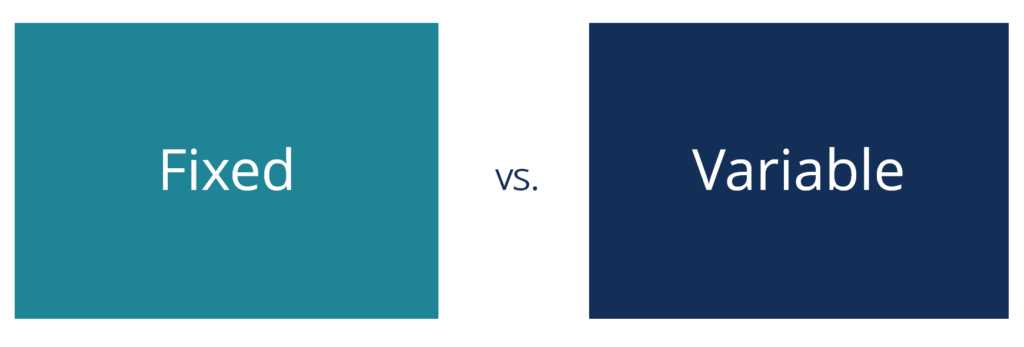Cost Structure is one of the key terms in designing and analyzing a startup business model. Of course, this term is older than entrepreneurship and business modelling concepts. Accounting and financial management professionals have always used it.
However, because entrepreneurs may forget about this concept due to the excitement of turning their dreams into reality, they need to be reminded about cost structure and its nuances and challenges.
That’s why most business model descriptions and analyses devote a section to cost structure. In his business model canvas, Osterwalder has also devoted a section to this concept.
Here are three subjects we are going to discuss:
- Cost structure Definition
- Cost structure in the business model canvas
- Tips on cost structure analysis
Learn more: Business Model vs. Business Plan: What Is the Difference?
Cost structure Definition
The cost structure refers to the share of each cost in the total cost of a business.This structure can be calculated for:
- A specific period of time (for example, one year)
- A particular product (share of each cost in the final product price )
- A factory production lines
- A particular industry (e.g. pharmaceutical industry or the production of the chip)
Paying attention to the cost structure paints a clearer picture of the business framework. Also, it helps manage costs in the business as you can identify the leverage points of the system to reduce costs.
Note that the calculation of the cost structure is entirely conventional based on what headings you define for the costs. Consider the following two examples:
Example 1:The accounting unit looks at the overall cost of an industrial piece
- Raw materials: 58%
- Energy consumption (including gas, electricity and water): 5%.
- Workforce: 16%.
- Depreciation of factory resources (production line equipment, warehouse and other capital resources): 3%.
- Sales: 8%.
- Other costs: 10%.
Example 2: A managerial look at the overall design of a car
The manager of a car company that intends to move from traditional car manufacturing to electric car production sees the cost structure based on other components:
Current situation:
- Chassis (9 to 12%)
- Body (11 to 20%)
- Driving force (22 to 24%)
- Equipment (30 to 37%)
- Other cases (15 to 20%)
All-electric vehicles (EVs):
- Battery set (35 to 50%)
- Chassis (4 to 9%)
- Body (7 to 19%)
- Driving force (8 to 20%)
- Equipment (11 to 27%)
- Other cases (5 to 15%)
Obviously, the components of the second example are not close to what accountants consider. Financing, depreciation of capital assets, etc., have no place in this structure. Instead, the goal is to compare the cost of two different designs.
So instead of talking about the right and wrong cost structure, you need to find the proper structure that reflects your startup or business concerns and priorities.
Cost Structure in the Business Model Canvas
In his book Business Model Generation, Osterwalder does not elaborate on cost structure. He simply lists a number of cost-related terms.However, the examples he gives show that his expectation is limited to:
- Knowing the main costs of the proposed business
- Guessing the relative share of each component (or at least their order in size and importance).
For example, when you plan to launch a messaging service, you should guess the cost components of the business. Also, estimate the position of the elements (such as security or advertising and information) in your cost structure.
Or, as another example, if you want to start a restaurant, you should approximate the cost and position of raw materials, workforce, renting a restaurant, and other costs such as advertising and equipment.
A Simple Method to Create the Structure
As mentioned, you can make your cost structure in different ways. However, a simple solution is as follows:
- Identify cost headings
- Always consider a heading for “Other Costs.” However, if this part covered a significant portion of the total cost, you probably haven’t recognized your main costs correctly.
- Try to list the expenses based on their importance.
Tips on Cost Structure
It is not enough to record your cost structure in the business canvas or present it to the investor. You should understand and analyze the structure.
Considering the following can help you in your way:
The Structure Changes Over Time
In the early stages of a startup or business, the cost structure is different from the final stages. Costs such as advertising and even executing and operational costs change over time.
One standard method is to depreciate costs. For example, suppose initial costs are depreciated over a period of time (one, three, five, or ten years). So, break them down into your current expenses. You do not have to follow standard accounting methods; just simply do it.
Based on the above information, you can build the cost structure in two stages:
- Seed and initial stages of the startup
- next stages
The Structure Changes as The Business Scale Grows
Along with changes in business scale, the structure of the costs may also change.
Some expenses are fixed. So, as the business grows, their share becomes smaller (for example, the cost of renting a restaurant). However, some other costs increase along with the business scale. They are usually known as variable costs.
The concept of fixed and variable costs is turned back to the factory era. However, they are still beneficial to use
In technology-based businesses, including platforms, the relationship between cost and scale is extremely complex. For this reason, dividing costs into fixed and variable is not enough to understand the cost combination.
However, the essence of the matter is that the cost structure often changes with scale. So if you are planning to design your business model or want to show your potential investors that you understand the overall architecture of your business, be sure to evaluate the cost structure at different scales.

The Cost Structure Is a Sign of a Business Identity
The cost structure is actually the DNA of a business. Usually, changes, developments, and innovations in any industry or business change the cost structure.
Take a moment to think about the cost structure of a traditional taxi service and compare it to the cost structure of online taxi service. Both businesses operate in the urban transportation industry, but their cost structure (and even their cost headings) are entirely different.
The difference between the cost structure of a small carmaker and a major global automaker such as Toyota shows us very well that their similarity is much less than it seems at first glance.
So in recognizing different businesses and industries, it is worthwhile to analyze their cost structure.
Also, in transformation proposals, estimating its impact on the structure can be one of the criteria for measuring the impact of that change.

